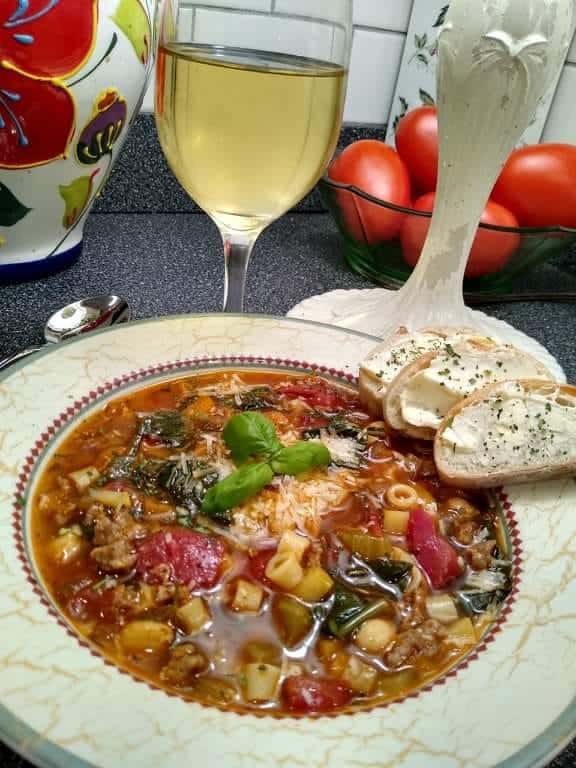Minestrone soup is a dish that feels like a warm hug in a bowl.
Minestrone soup has its roots in Italy.
It started as a way for people to make the most of whatever vegetables they had on hand. The name “minestrone” comes from the Italian word minestra, meaning soup, but with a little extra heartiness—think “big soup.” It’s been around for centuries, evolving as a go-to meal for farmers and families who needed something filling, nutritious, and easy to throw together with seasonal ingredients. Like many traditional dishes, it’s more than just a recipe; it’s a connection to Italy’s agricultural past, a snapshot of changing season.
The beauty of minestrone is how it changes depending on where you are in Italy. In the north, you’ll find versions with potatoes and rice, perfect for cold days. Down south, it’s lighter, featuring tomatoes, zucchini, and pasta, giving it a more Mediterranean vibe. Some people toss in pancetta or use meat-based broths, while others keep it fully plant-based—especially during Lent or for those sticking to vegetarian diets.
Minestrone also fits perfectly into modern kitchens, whether you’re vegetarian, vegan, or just trying to clean out the fridge. You can swap pasta for rice, use gluten-free grains, or lean into what’s fresh at the farmers market. Spring versions might be packed with peas and asparagus, while winter bowls are heavier, featuring cabbage and root veggies. There’s always room to make it your own, which is why it’s been embraced far beyond Italy.
What’s great about minestrone is that it feels both nostalgic and practical. It’s not fancy or fussy—it’s a soup built from simple ingredients. Whether you serve it as a starter or a main dish, it’s all about comfort and making the most of what you have. It’s a little piece of Italy’s history in every spoonful, showing that good food doesn’t have to be complicated to be satisfying.
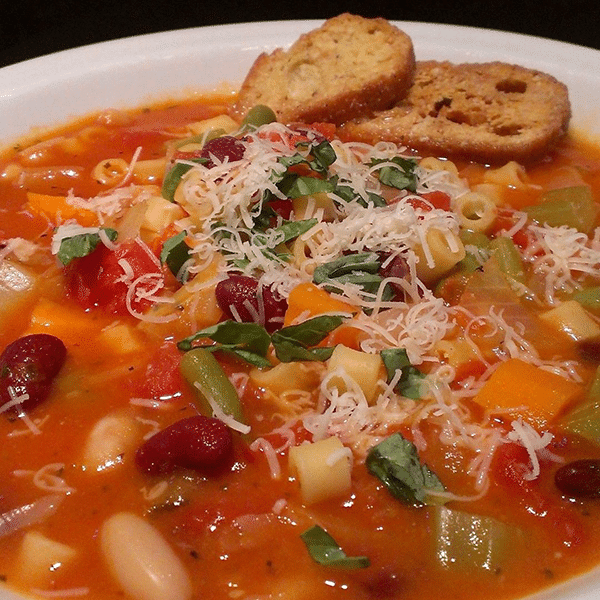

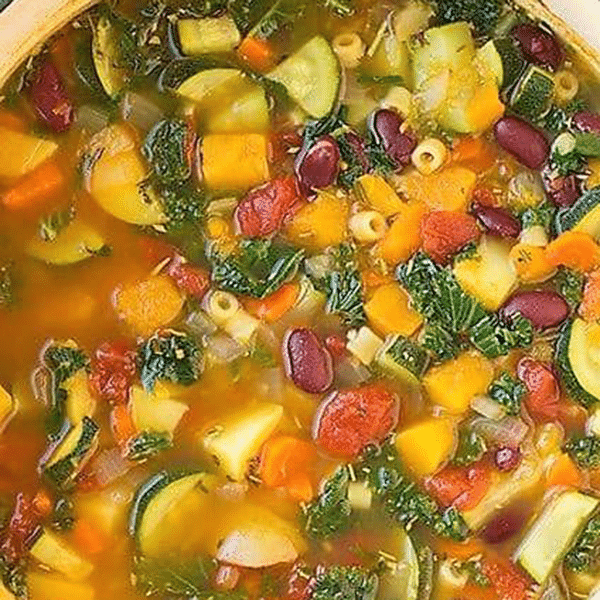
It’s a dish that really has no rules — part of what makes it so lovable.
The Cook’s Cook Facebook Community Forum Group has become a hub for minestrone lovers, with contributors sharing inventive bowls for every season. From classic Italian flavors to unexpected twists, these soups highlight just how adaptable and satisfying minestrone can be. Each post reflects the beauty of this dish—no two bowls are the same, and that’s exactly the point.
Here’s a look at nine standout contributions that capture the spirit of minestrone through the seasons:
- Here’s a taste of some of the community’s standout submissions, each bowl as unique as the person behind it:
- Autumn Minestrone by Philip Nicholas – A cozy soup featuring sweet onion, carrots, celery, diced tomatoes, napa cabbage, cannellini beans, kidney beans, ditalini pasta, and chicken broth, finished with extra virgin olive oil, garlic, oregano, basil, and Parmesan.
- Winter Minestrone by Bronna Shapiro – Packed with carrots, celery, onions, garlic, potatoes, Swiss chard, and a mix of spicy and mild Italian sausages, along with cannellini beans. Perfect for staying warm when it’s freezing outside.
- Autumn Minestrone Soup by Jennifer Nowicki – A seasonal classic that captures the flavors of fall with comforting, hearty ingredients.
- Winter Minestrone by Michel-Yves Scavennec – As the temperature drops, this soup is ready to step in with its rich flavors. A true winter warmer.
- Fresh Fruit Minestrone and Mascarpone Pear Sorbet by Fran Flint – A sweet twist on the classic, using summer fruits and paired with a refreshing mascarpone pear sorbet.
- Orzo-Based Kale Minestrone by Aruna Vasudevan – Aruna calls soups her “haven in a heartless world,” and this one fits the bill with orzo and kale bringing both comfort and depth.
- Summer Minestrone by Christina Rey – A light, garden-fresh soup filled with homegrown vegetables. Best of all, it’s freezable, making it a great option for quick summer meals.
- Stick-to-Your-Bones Minestrone by Michelle Somerville – This one’s all about big flavors, with pancetta and ham making it perfect for those cold, rainy days.
- Pearl Barley, Smoked Paprika, and Kale Minestrone by Caryn Scott – A hearty variation with smoky notes from paprika and the bite of pearl barley, making every spoonful satisfying.
These bowls are proof that minestrone is more than just soup—it’s a reflection of seasons, moods, and personal tastes. Whether you’re using garden vegetables, hearty grains, or even fruit, this dish is a reminder that there’s no wrong way to make minestrone. ![]()
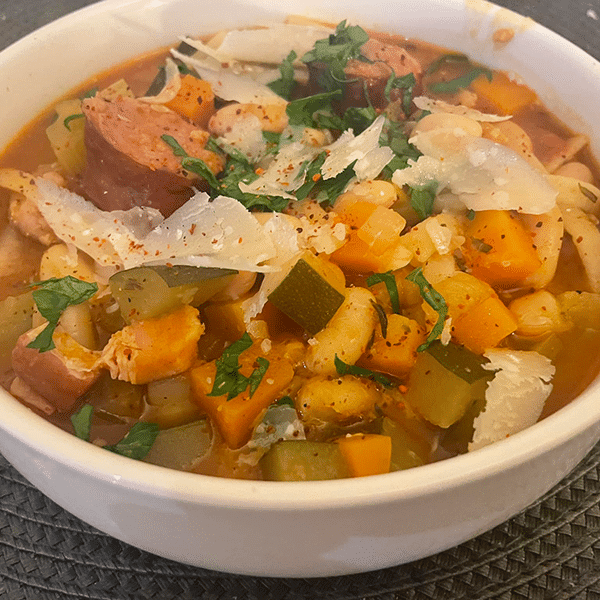
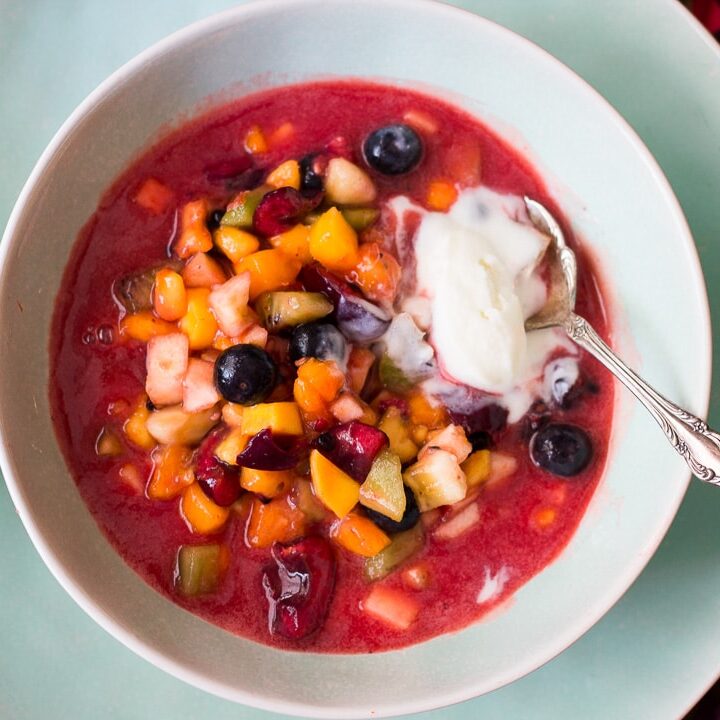
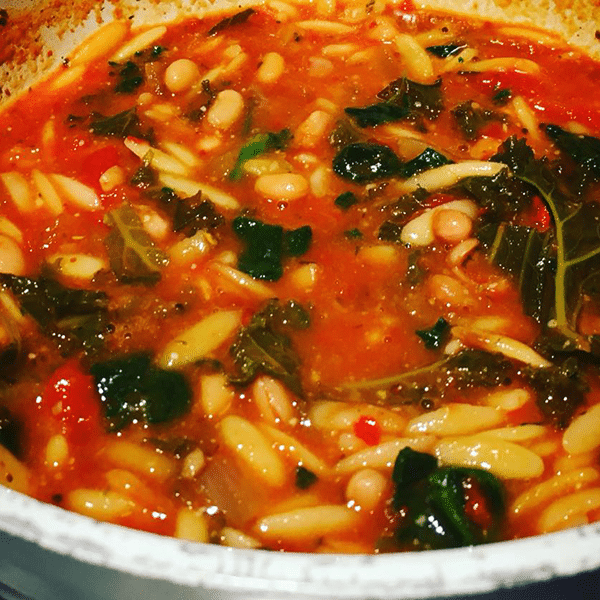
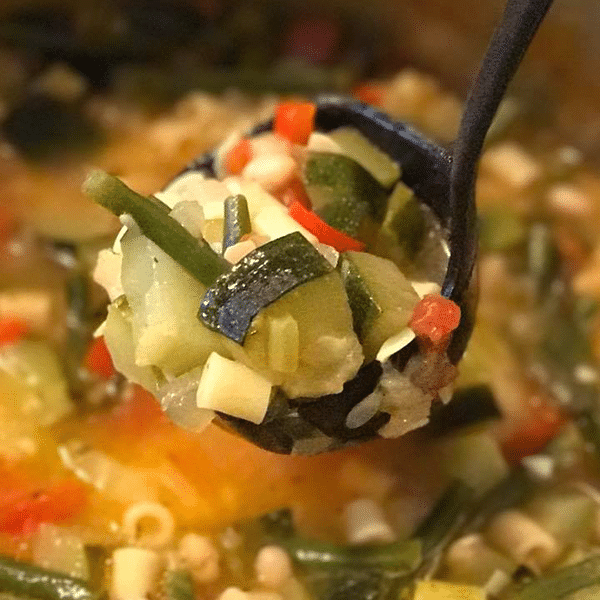
Summer Minestrone by Christina Rey
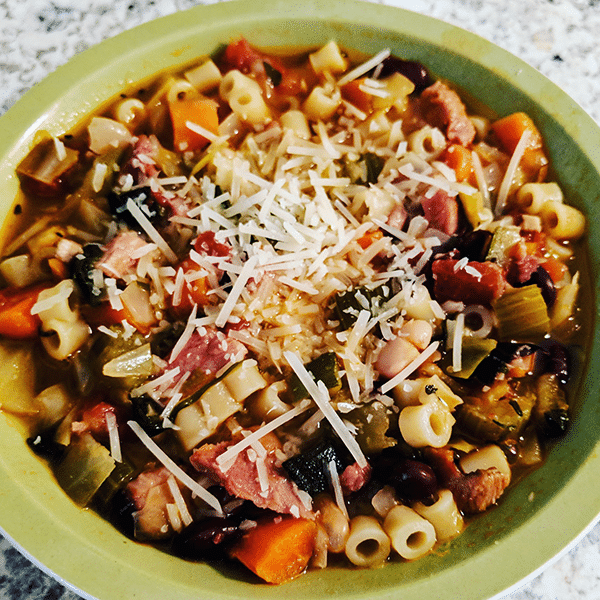
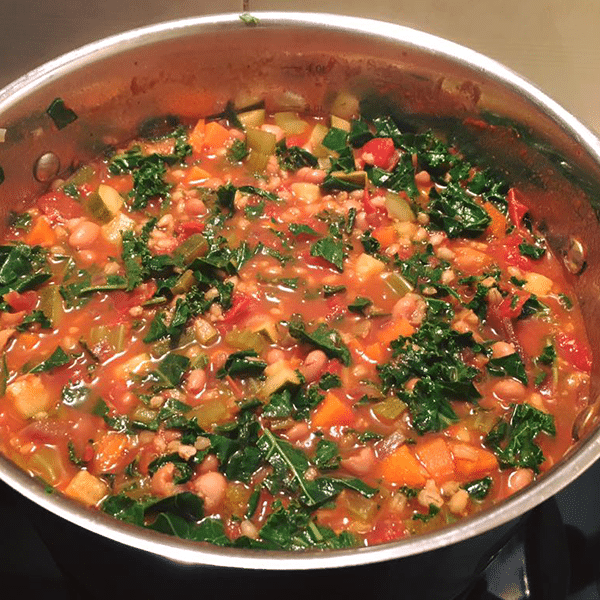
Minestrone encourages creativity, invites improvisation, and always finds a way to make the most of what’s on hand.
